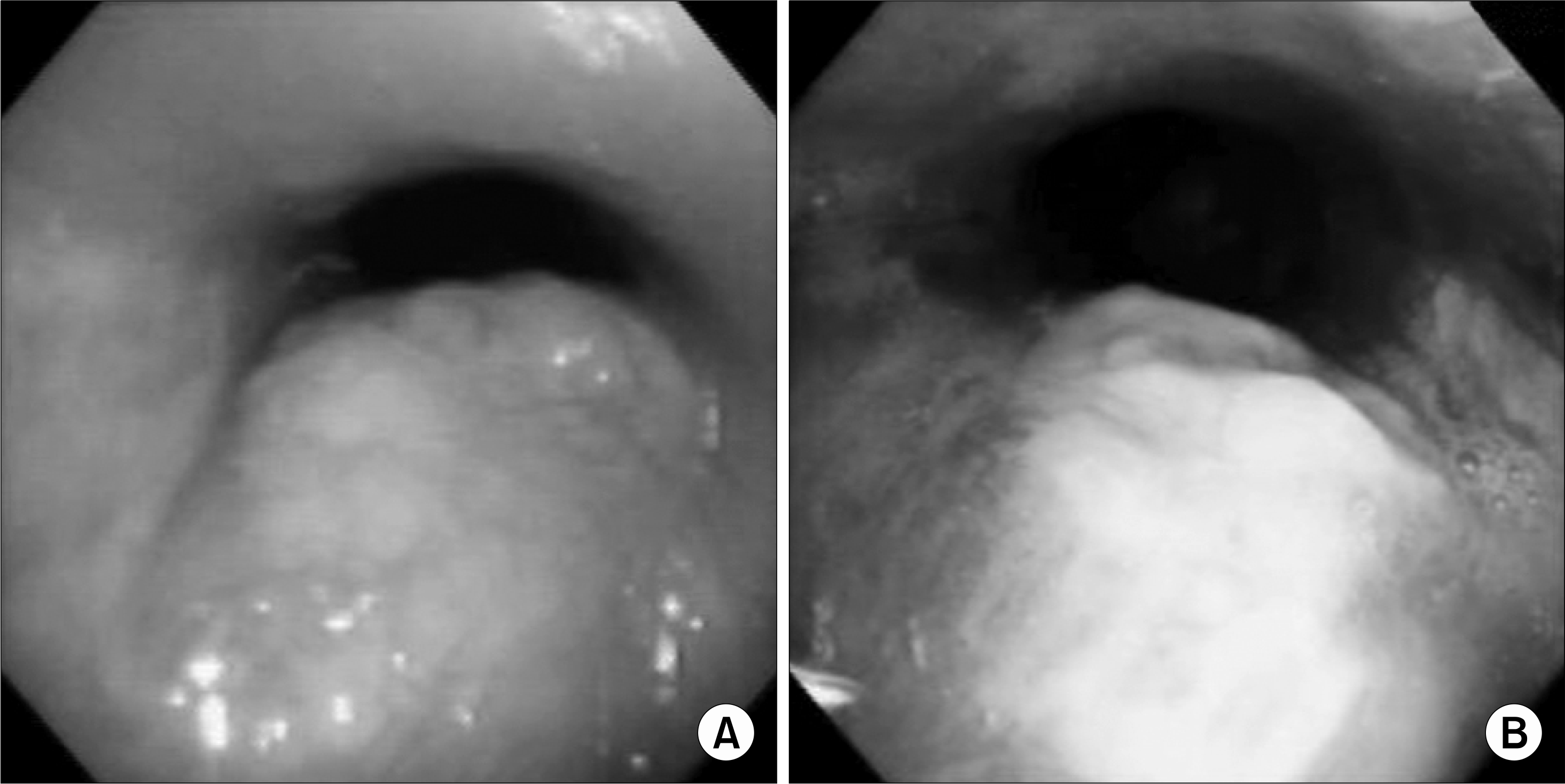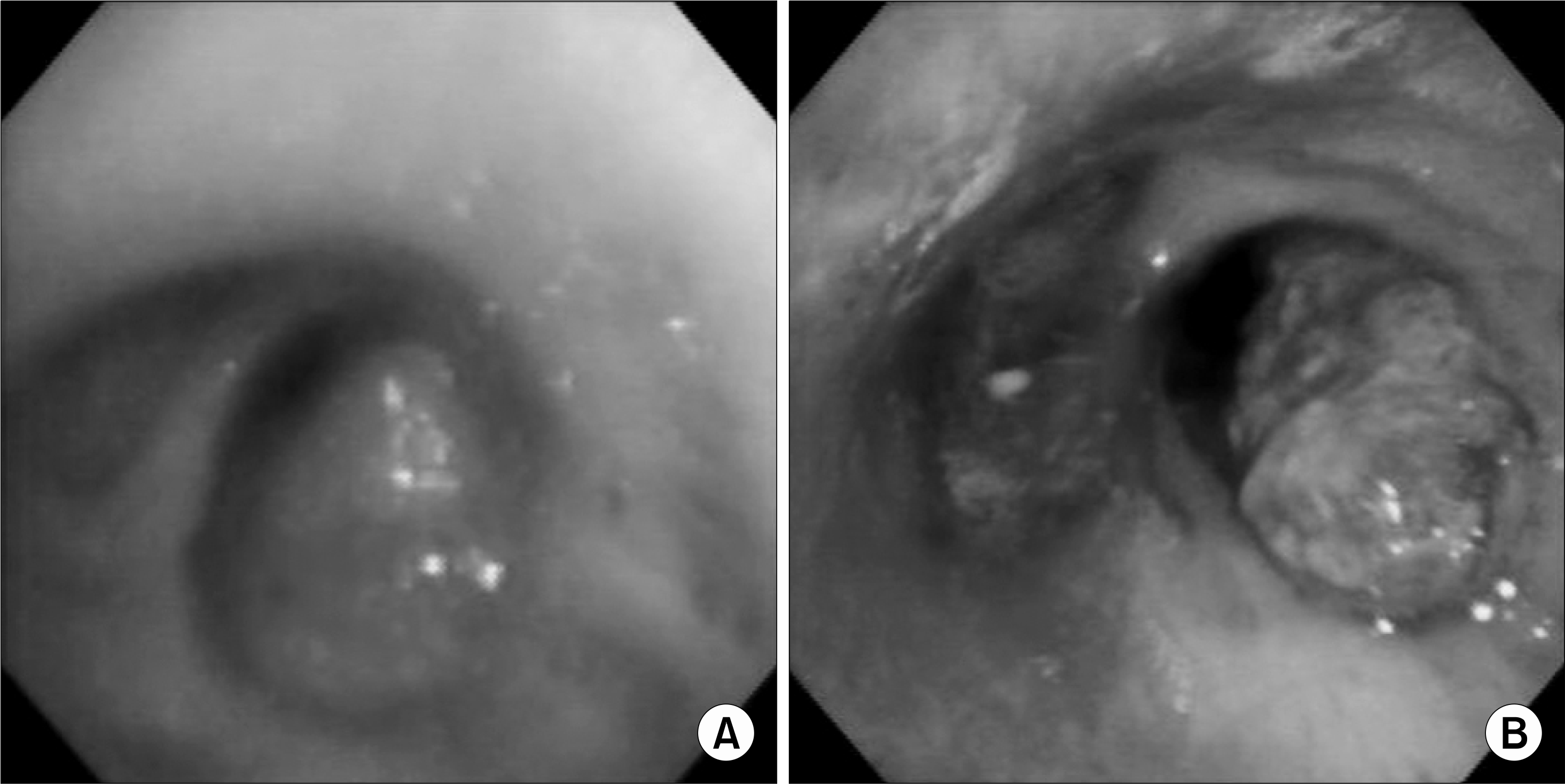Abstract
Recurrent lung cancer with endobronchial obstruction after surgical resection due to lung cancer may lead to severe dyspnea, respiratory insufficiency and sudden death. Many palliative modalities including partial excision of endobronchial tumor, insertion of stent, and evaporation with laser, have been used for endobronchial obstruction due to recurrent endobronchial lung cancer. In photodynamic therapy (PDT), photosensitizer named photofrin, is infused intravenously at 48 hours before PDT, and diode laser of an appropriate wavelength is applied to induce destruction of tumor mass with 200∼250 J/ cm2. We report 2 cases of treatment using PDT for endobronchial obstruction due to recurrent endobronchial lung cancer after surgical resection.
References
1. Cavaliere S, Foccoli P, Toninelli C, Feijo S. Nd-YAG laser therapy in lung cancer: An 11 year experience with 2253 applications in 1585 patients. J Bronchol. 1994; 1:105–111.
2. Vergnon JM, Mathur PN. Cryotherapy for endobronchial disorders. Bolliger CT, Mathur PN, editors. Interventional Bronchoscopy. Vol. 30 of Progress in Respiratory Research. Basel: Karger;2000. p. 133–145.

3. Macha HN, Wahlers B, Reichle G, Zwehl D. Endobronchial radiation therapy for obstructing malignancies: ten years' experience with iridium-192 high-dose radiation brachytherapy afterloading technique in 365 patients. Lung. 1995; 173:271–280.

4. Sutedja G, Schramel F, van Kralingen K, Postmus PE. Stent placement is justifiable in end-stage patients with malignant airway tumours. Respiration. 1995; 62:148–150.

6. Moghissi K. Role of bronchoscopic photodynamic therapy in lung cancer management. Curr Opin Pulm Med. 2004; 10:256–260.

7. Dougherty TJ. Activated dye as an antitumour agent. J Nat Cancer Inst. 1974; 52:1333–1336.
8. Hyata Y, Kato H, Konaka C, et al. Haematoporphyrin in derivative and laser photoradiation in the treatment of lung cancer. Chest. 1982; 81:264–277.
9. Maziak DE, Markman BR, MacKay JA, Evans WK. Photodynamic therapy in nonsmall cell lung cancer: A systemic review. Ann Thorac Surg. 2004; 77:1484–1491.
Fig. 1.
A 49-year-old women with recurrent left main endobronchial cancer. (A) Before photodynamic therapy, the left main bronchus was 80∼90% obstructed by endobronchial cancer. (B) After seven days of photodynamic therapy, severe dyspnea was improved because bronchial obstruction was improved due to decreased tumor mass.

Fig. 2.
A 55-year-old man with recurrent right lower endobronchial cancer. (A) Before photodynamic therapy, the right lower bronchus was near totally obstructed by endobronchial cancer. (B) After seven days of photodynamic therapy, the bronchial lumen was widened due to decreased endobronchial tumor mass.





 PDF
PDF ePub
ePub Citation
Citation Print
Print


 XML Download
XML Download